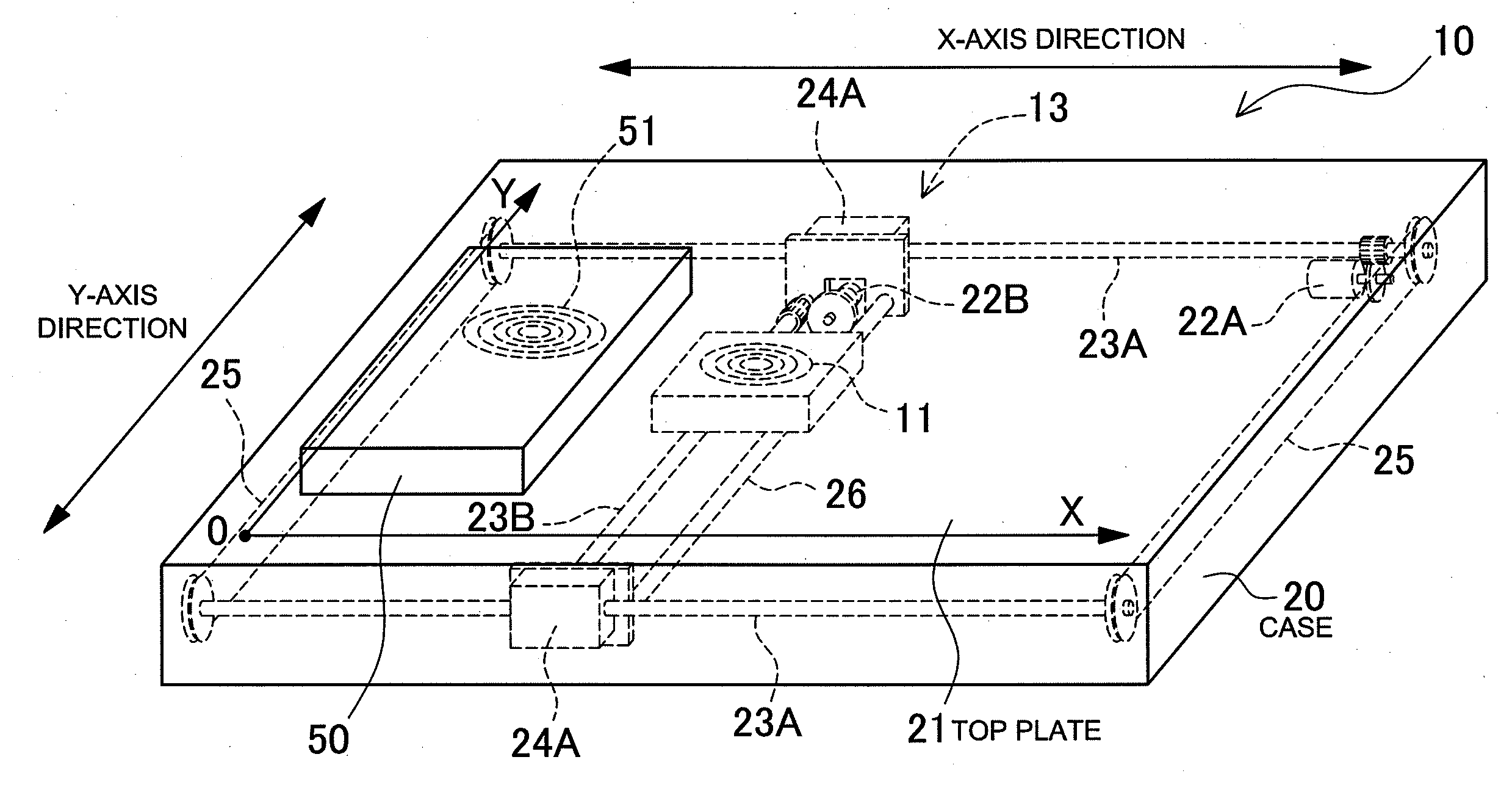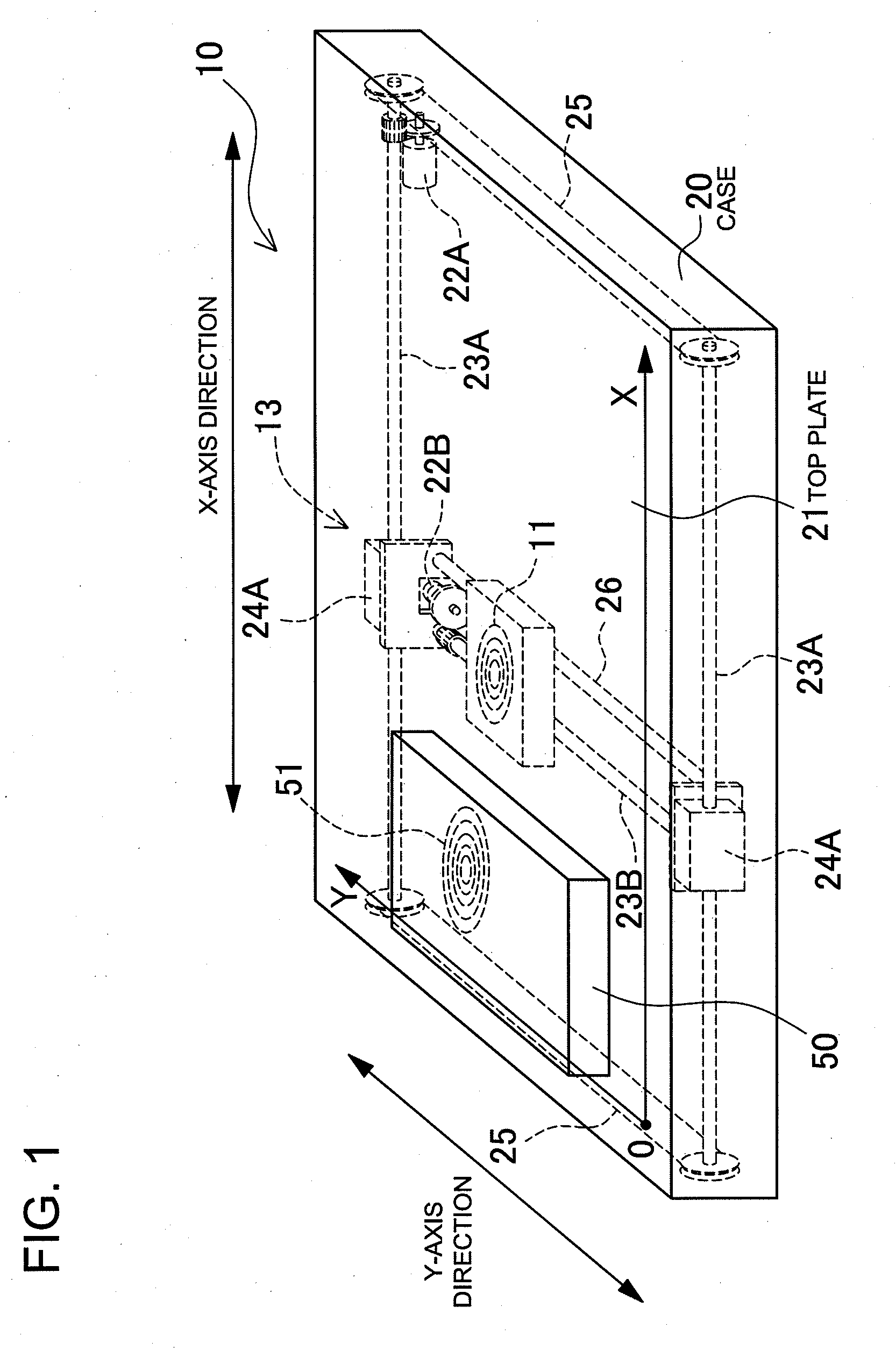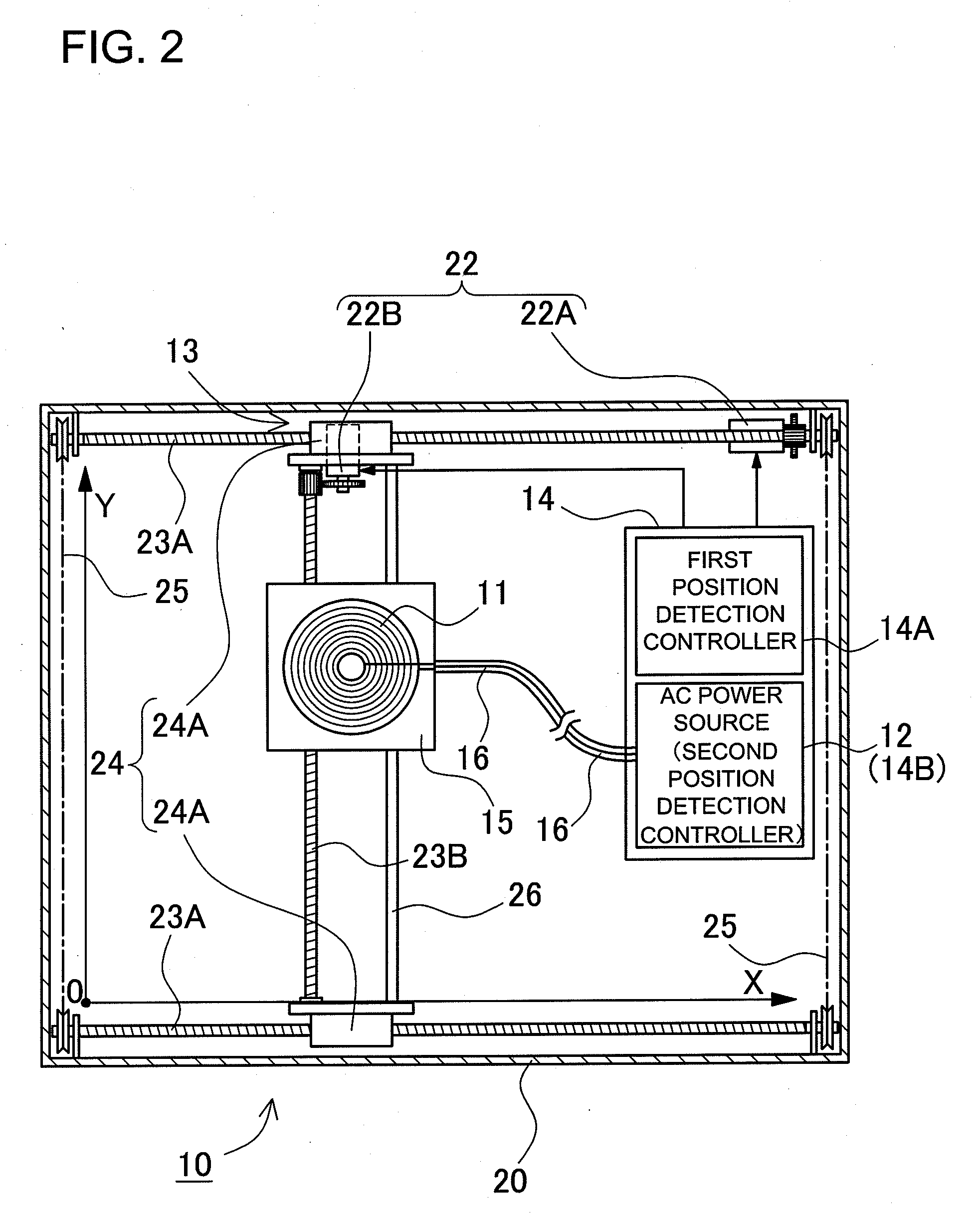Battery charging pad employing magnetic induction
a charging pad and magnetic induction technology, applied in the direction of inductance, transformer, transportation and packaging, etc., can solve the problems of troublesome setting the device on the charging pad, reduced power transmission efficiency, and difficulty in ensuring that all users are satisfied, and achieves simple circuit structure, rapid detection, and additional accuracy
- Summary
- Abstract
- Description
- Claims
- Application Information
AI Technical Summary
Benefits of technology
Problems solved by technology
Method used
Image
Examples
Embodiment Construction
)
[0039]The following describes embodiments of the present invention based on the figures. However, the following embodiments are merely specific examples of battery charging pads representative of the technology associated with the present invention, and the battery charging pad of the present invention is not limited to the embodiments described below.
[0040]FIGS. 1-6 show abbreviated structural and conceptual views of a battery charging pad. As shown in FIGS. 1 and 6, a device housing a battery 50 is placed on the battery charging pad 10, and the internal battery 52 is charged utilizing magnetic induction. A device housing a battery 50 contains a receiving coil 51 that magnetically couples with the transmitting coil 11. The device housing a battery 50 also contains a battery 52 that is charged by power induced in the receiving coil 51. Here, the device housing a battery 50 can also be a battery pack.
[0041]FIG. 6 shows a circuit diagram of the device housing a battery 50. The device...
PUM
 Login to View More
Login to View More Abstract
Description
Claims
Application Information
 Login to View More
Login to View More - R&D
- Intellectual Property
- Life Sciences
- Materials
- Tech Scout
- Unparalleled Data Quality
- Higher Quality Content
- 60% Fewer Hallucinations
Browse by: Latest US Patents, China's latest patents, Technical Efficacy Thesaurus, Application Domain, Technology Topic, Popular Technical Reports.
© 2025 PatSnap. All rights reserved.Legal|Privacy policy|Modern Slavery Act Transparency Statement|Sitemap|About US| Contact US: help@patsnap.com



